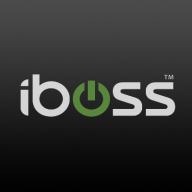


Omada Identity and JumpCloud compete in the identity and access management space, each offering robust solutions tailored to different organizational needs. Omada seems to have an advantage in identity governance and seamless integration with Microsoft technology, while JumpCloud stands out with its unified platform for identity and device management, appealing to organizations looking for straightforward solutions.
Features: Omada Identity is known for its strong identity governance, automatic provisioning and reconciliation, and the ability to handle Microsoft technology effectively. It features a powerful workflow engine and comprehensive reporting capabilities. JumpCloud provides a unified platform for identity management, SSO, and access control, with seamless integration options through SAML 2.0. It also offers streamlined WiFi authentication and versatile device management functionality.
Room for Improvement: Omada Identity could enhance its UI and user-friendliness for non-technical users, as well as increasing flexibility in its SaaS version. There is also a need for more agile design improvements. JumpCloud, while easy to use, could improve device compatibility and synchronization functionalities, with users expressing a desire for more refined integration features and enhanced reporting. Additional development of connectors and out-of-the-box functionalities could further improve user experience for both solutions.
Ease of Deployment and Customer Service: Omada Identity offers diverse deployment options, including on-premises, hybrid, and public cloud, although there is a learning curve with the on-premises setup. Customer service is rated well but could improve in technical support and documentation complexity. JumpCloud focuses on public cloud deployment, recognized for ease of setup and operational stability, with users generally satisfied with customer service despite challenges in resolving complex technical issues.
Pricing and ROI: Omada Identity is seen as premium-priced, competitive in its cloud offerings, and beneficial in reducing manual work while enhancing compliance, yielding substantial ROI over time. Its user-based licensing supports scaling and budgeting, despite notable initial costs. JumpCloud features flexible pricing that scales with usage, beginning at an accessible price point and allowing feature scaling as needed. Users appreciate its transparent and competitive pricing compared to alternatives. Both solutions aim to deliver ROI by streamlining access management and boosting security, catering to varied organization sizes and budgets.



| Company Size | Count |
|---|---|
| Small Business | 6 |
| Midsize Enterprise | 6 |
| Large Enterprise | 5 |
| Company Size | Count |
|---|---|
| Small Business | 13 |
| Midsize Enterprise | 2 |
| Large Enterprise | 3 |
| Company Size | Count |
|---|---|
| Small Business | 8 |
| Midsize Enterprise | 3 |
| Large Enterprise | 41 |
iboss offers a comprehensive security platform designed for diverse use cases such as web filtering, data loss protection, corporate proxy services, and URL filtering.
iboss integrates advanced features to address dynamic security needs, leveraging its strength in SASE, ZTNA, AI initiatives, and cloud integration, while ensuring seamless operations for remote work. It excels in historical forensics, malware protection, and flexible cloud deployments. Users benefit from comprehensive traffic scanning, robust malware detection, and PaaS capabilities that reduce hardware management. An intuitive admin console ensures efficient management with content filtering and low false positives. SSL decryption enhances security, while DLP protects data in AI conversations. Deployment is rapid and scalable, allowing effortless integration with emerging technologies.
What features does iboss offer?
What benefits and ROI should users consider?
iboss finds significant application in sectors such as education, where web filtering for K-12 is crucial, and in corporate environments requiring robust proxy services and URL filtering for network security. Its adaptability is essential in scenarios demanding flexible, decentralized security frameworks, particularly for remote work setups.
JumpCloud offers efficient device management, single sign-on, and integration capabilities. It integrates seamlessly with Microsoft 365 and Google Workspace, streamlining user management across diverse environments.
JumpCloud delivers device, user, and application management across platforms like Windows, Mac, Linux, and cloud services such as AWS and Azure. Acting as a cloud-based directory, it facilitates single sign-on and identity access management, making it an attractive replacement for Active Directory and LDAP directories. Its policy management and centralized directory simplify user and device administration, offering a user-friendly interface with flexible access control and remote management. Organizations can experience streamlined onboarding and offboarding processes, robust authentication, and scalability. Despite being powerful, room for improvement is noted in alert capabilities, comprehensive MDM for Windows, multi-tenant features, and API reliability.
What are the key features of JumpCloud?Companies across industries utilize JumpCloud for comprehensive management of devices and user identities. It is especially beneficial in technology-driven sectors where centralized directory services replace traditional Active Directory and LDAP models. Organizations employing platforms like AWS and Azure find it essential for maintaining efficient and secure access management.
Omada Identity is an identity governance and administration (IGA) solution designed to help organizations manage and secure digital identities and access across their IT environments. It focuses on enhancing security, compliance, and efficiency by automating identity management processes.
Omada Identity offers a robust set of features that streamline identity lifecycle management, access governance, and compliance reporting. It integrates with a wide range of IT systems, applications, and data sources, providing a centralized platform for managing user identities and access rights. The solution enables organizations to enforce security policies, ensure regulatory compliance, and reduce the risk of unauthorized access.
What are the critical features of Omada Identity?
What benefits or ROI items should users look for in the reviews when evaluating Omada Identity?
Omada Identity is widely adopted across various industries, including healthcare, finance, and manufacturing. In healthcare, it helps protect patient data and comply with regulations like HIPAA. In finance, it ensures compliance with SOX and other financial regulations. In manufacturing, it secures access to sensitive production data and intellectual property.
Pricing and licensing for Omada Identity are typically based on the number of users and the specific features required. Customer support is available through various channels, including online resources, support tickets, and professional services for implementation and customization.
In summary, Omada Identity is a comprehensive IGA solution that enhances security, compliance, and efficiency in managing digital identities and access.
We monitor all Identity Management (IM) reviews to prevent fraudulent reviews and keep review quality high. We do not post reviews by company employees or direct competitors. We validate each review for authenticity via cross-reference with LinkedIn, and personal follow-up with the reviewer when necessary.